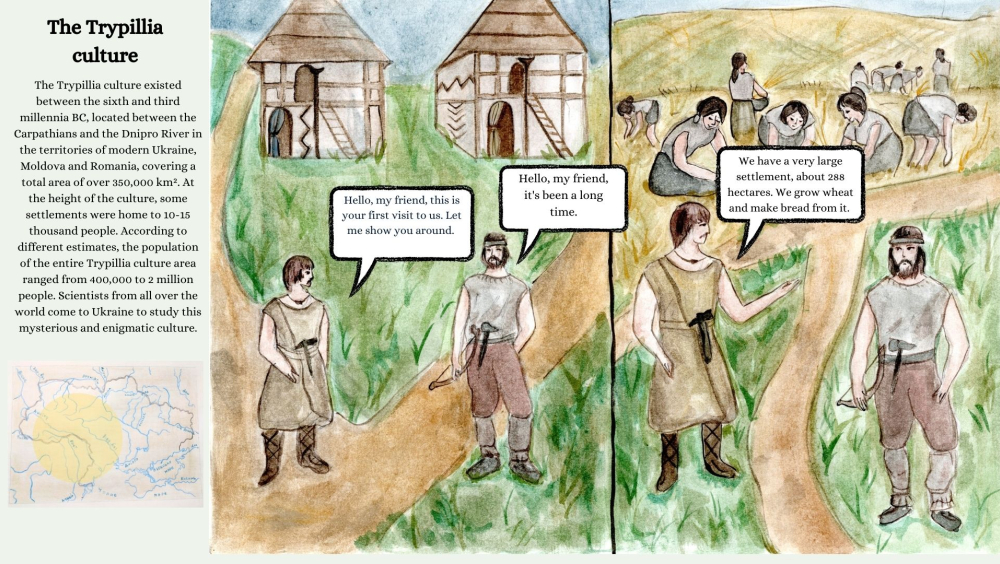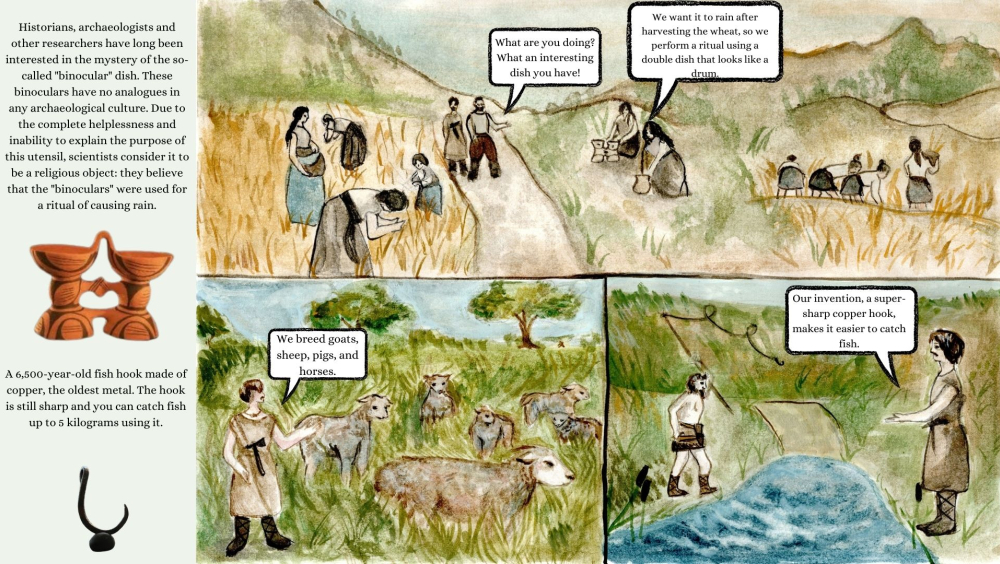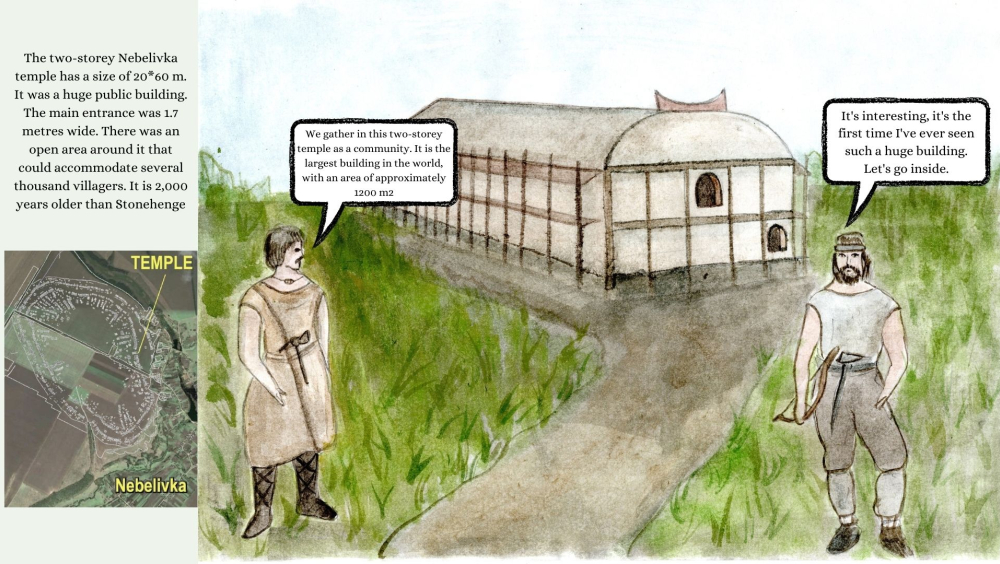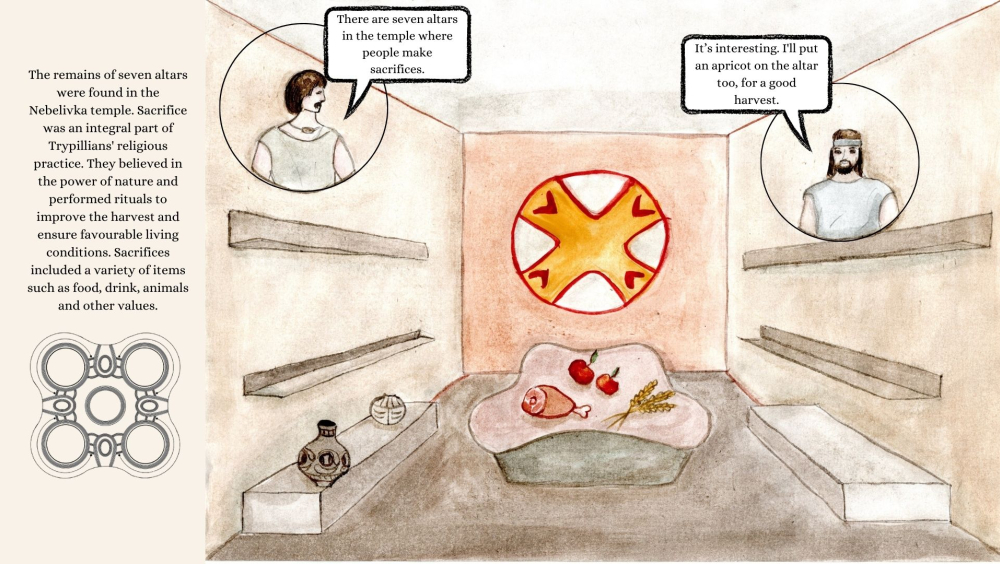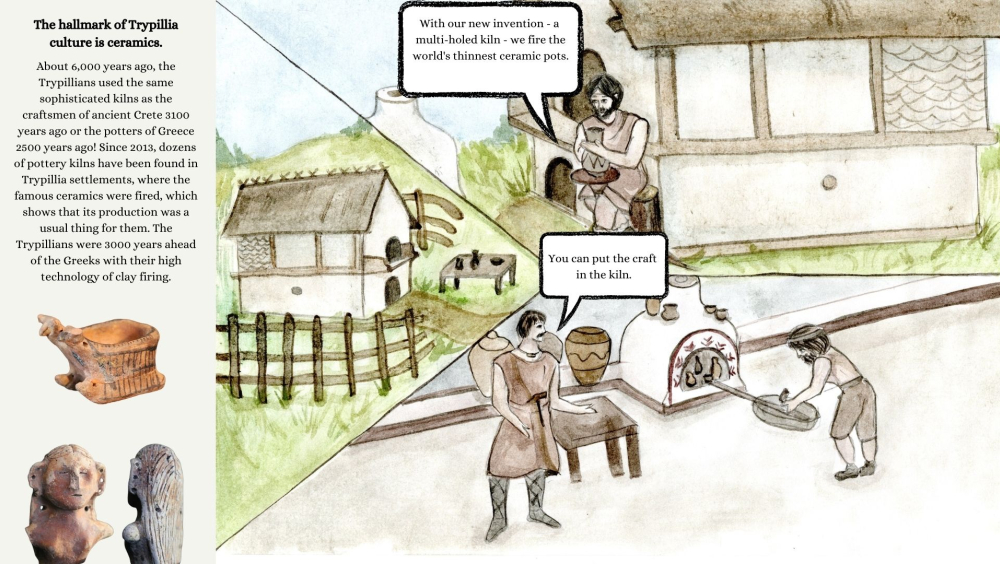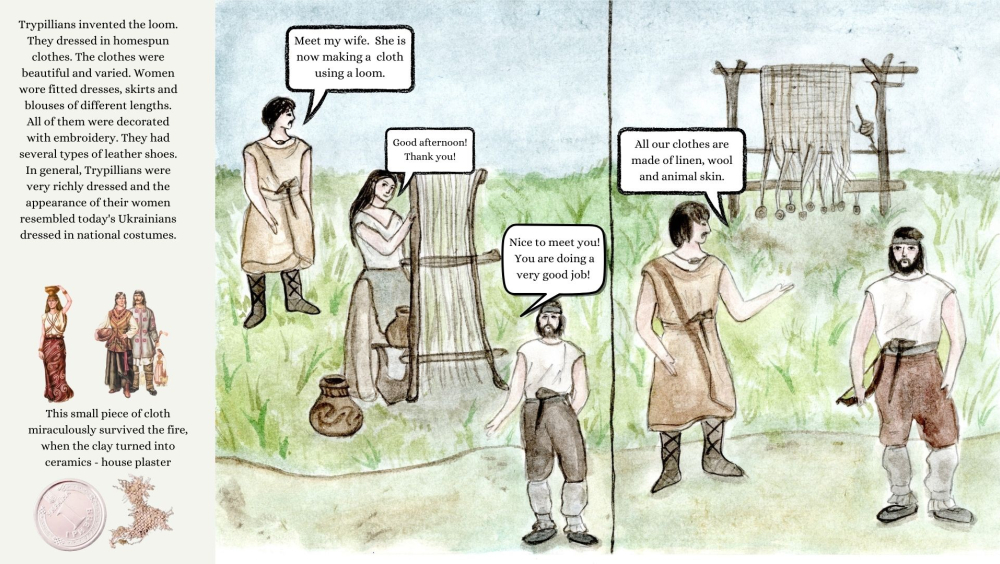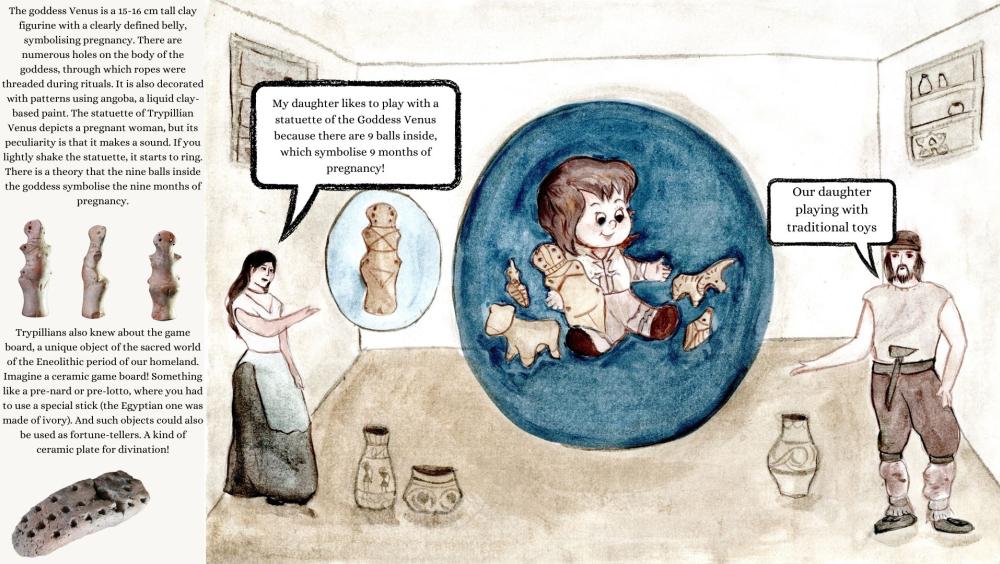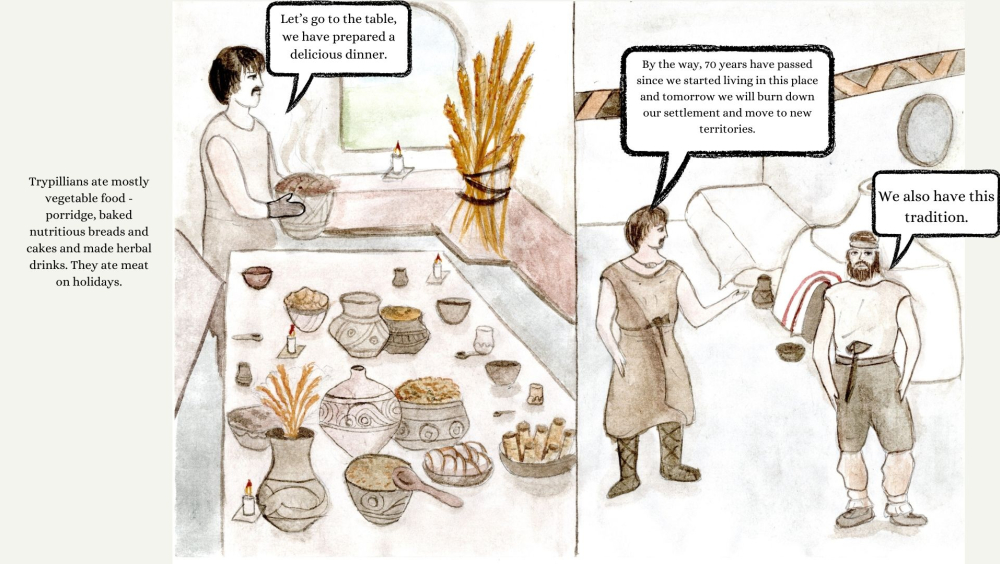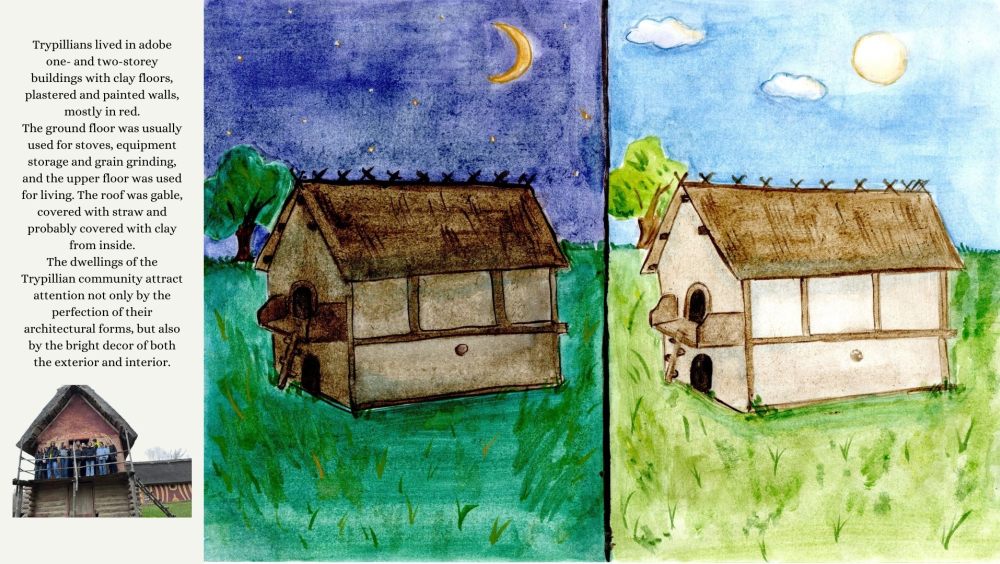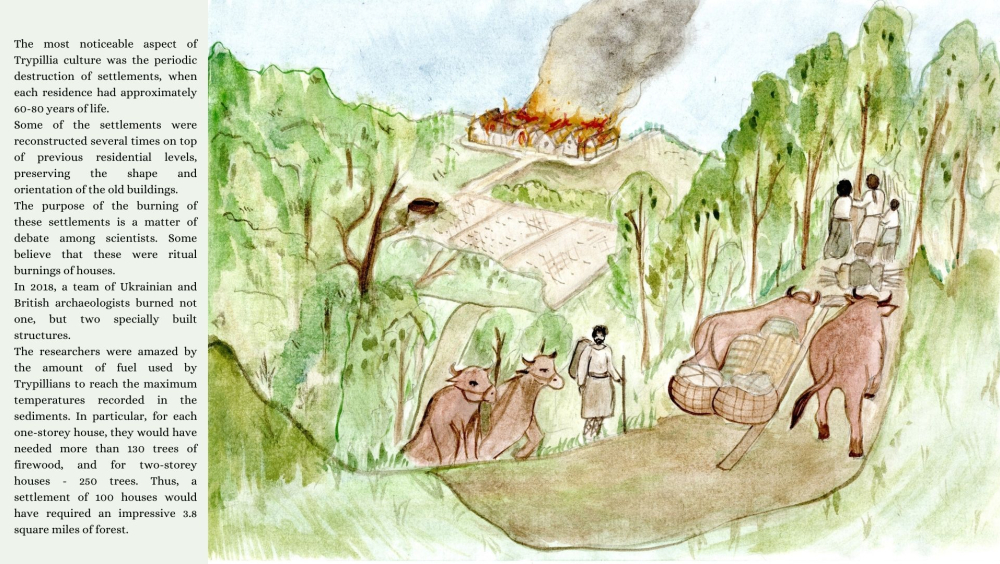Trypillia Culture
Trypillia Culture
The peoples who have lived on the territory of Ukraine from ancient times to the present have left behind a great cultural heritage, which is without a doubt the heritage of the Ukrainian culture.
Trypillia culture is one of the most interesting and least explored farming cultures in Europe. It existed during the Eneolithic period from the 6th to the 3rd millennia BC ( Біфор Крайст)) on the territory of modern Ukraine, Moldova and Romania.
As residents of Kirovohrad Region we were especially interested in studying of Trypillia culture. The very heart of the Trypillian settlement is located in our region and the neighbouring Cherkasy Region. Although archaeological research on this culture has been going on since the late 19th century, it is still mysterious and not fully investigated.
6608 6606 In recent years, scientists from all over the world been investigating Trypillia settlements. Most scholars consider their existence as a proof of an early and unique attempt of urbanisation. This may be the key to understanding how modern Europe emerged from the Stone Age, and even shed new light on the emergence of human civilisation in general.
On the territory of modern Ukraine, the Trypillia culture was discovered by Ukrainian archaeologist of Czech origin Vikentiy Khvoykain 1893, 130 years ago. In Romania, it was discovered by Theodore Burada in the village of Cucuteni in 1884.
A new stage in the study of Trypillia culture began in 2011. Geophysicists of the Roman-German Commission of the German Archaeological Institute (Frankfurt) and then the Institute of Pre- and Protohistoric Archaeology of the A. Brecht University (Kiel) made modern plans of several settlements. Then Polish, British and other European researchers joined in. The use of modern technology and natural research methods opens up prospects for expanding our knowledge of Trypillia culture and Trypillians.
Trypillian settlements were quite large, covering an area of up to (фор хандрет)400 hectares, with up to 2,000 houses and up to 50,000 inhabitants. It is also known that they built houses in a circle, because it was easier to defend themselves from enemies.
Trypillians burned their houses every 75-80 years and moved to new lands. On the territory of modern South-Eastern and Eastern Europe, there was a so-called burned house horizon between 6500 BC and 2000. Historians of Neolithic and Eneolithic Europe are still debating whether most of the burnt houses were set on fire on purpose or not.
Some scientists have considered the Cucuteni-Trypillia culture to be the largest and most influential of the Neolithic cultures in Eastern Europe during the transition to the Eneolithic period. The study of Trypillia culture will allow scientists to understand the phenomenon of the burned house horizon.
The hallmark of Trypillia culture is ceramics. Clay baked on fire became the first artificial material and the creation of pottery was one of the greatest achievements of that time.
Trypillians made three types of tableware: household, kitchen and religious. Among the kitchen utensils used for cooking were pots, mugs, lids, bowls, amphorae, etc.
Trypillian wares are distinguished by an original ornamentation, which includes geometric and anthropomorphic motifs. On many clay products, the lower part was not decorated, it reflected the underworld.
We also had an opportunity to attend a pottery workshop and create ceramic pots similar to those of Trypillia. At the workshop we were shown how to work with clay and we were explained how Trypillians made their own pottery.
Trypillia culture was also famous for the largest buildings of its time. One of these buildings was the Nebelivka Temple, with an area of about 1200m2. A model of the Nebelivka temple has been recently created in Ukraine so we can see what it looked like. We had an opportunity(опортюніті) to see it when we visited the "Religions of Nature" centre.
The Museum of Local History in Kropyvnytskyi keeps 7 altars found in the temple of Nebelivka. Trypillians sacrificed fruit, vegetables and animals, there are also human sacrifices. The altar presented in the museum stands out among the others because of its preservation, which is about 40%. It was restored by Stanislav Fedorov in 2014. It was preserved due to a combination of many factors, one of the main ones is the manufacturing technology - during the smoothing of the surface, the clay compacted and gained a certain strength.
We have found a lot of elements from the culture of this nation in Ukrainian culture. These are different ornaments on embroidered shirts and pysankas, the culture of creating pottery and building houses.
In order to better understand the cultural heritage of Trypillians and encourage other students to study and research Trypillia culture, we created a kind of advertising: colouring books of clothes, ceramics, houses and jewellery. We also created a comic book called "Trypillia Culture" where we recreated a day of Trypillians’ life.
